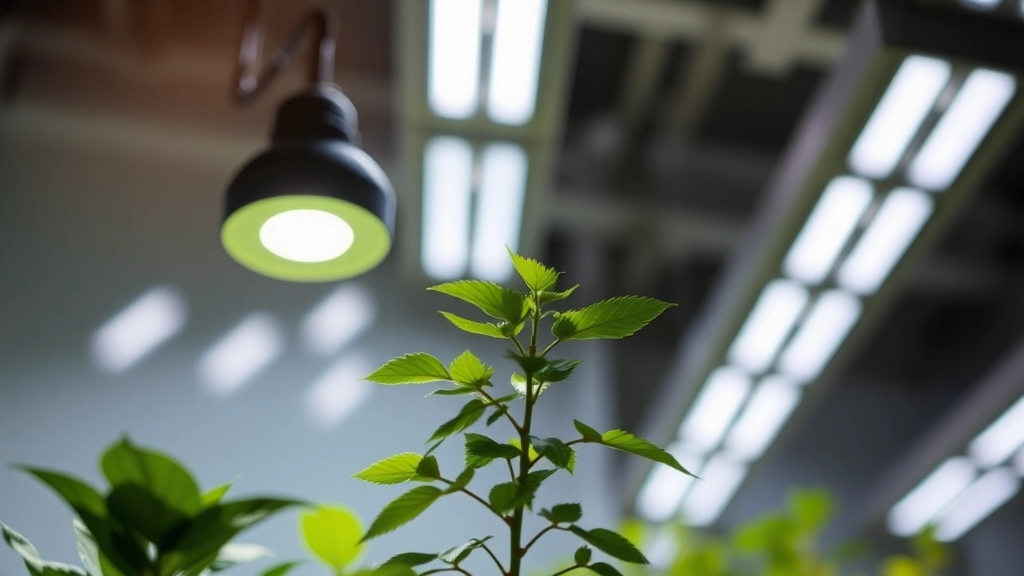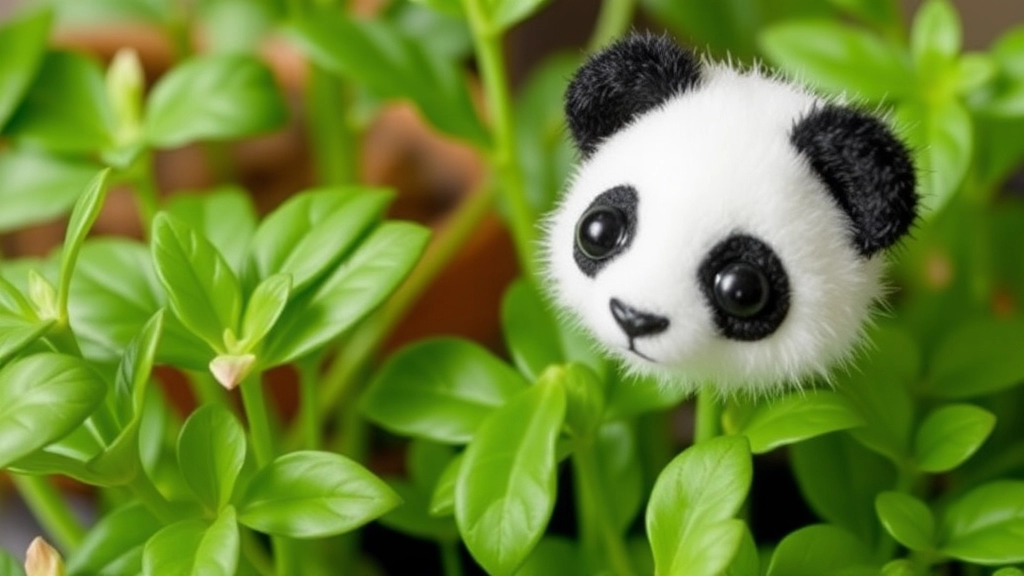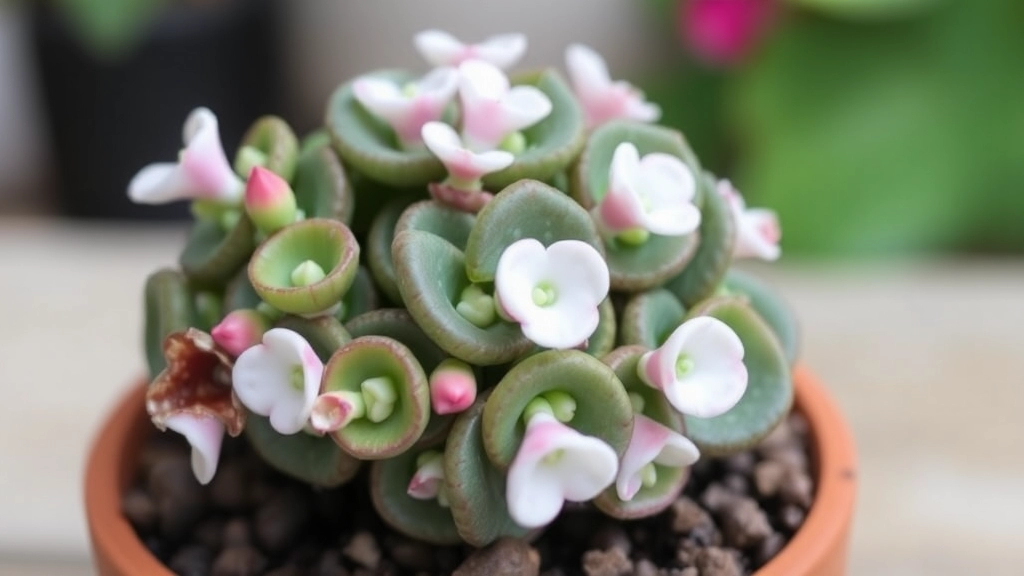Kalanchoe Panda Plant
The Kalanchoe Panda Plant, with its fuzzy, spotted leaves, is a favourite among succulent enthusiasts. Known for its unique appearance and low-maintenance nature, this plant can add a touch of charm to any indoor garden. Let’s dive into what makes the Kalanchoe Panda Plant so special and how to care for it effectively.
Characteristics of the Kalanchoe Panda Plant
Understanding the characteristics of the Kalanchoe Panda Plant is crucial for its care. This succulent thrives in bright, indirect light and prefers moderate temperatures. Proper watering and soil conditions are essential to prevent common issues like overwatering or pests. Whether you’re a seasoned gardener or a beginner, these tips will help you keep your Panda Plant healthy and vibrant.
Are you curious about what makes the Kalanchoe Panda Plant a unique addition to your home?
This delightful succulent, also known as *Kalanchoe tomentosa*, is renowned for its distinct characteristics.
## Unique Features
– **Leaf Structure**: The Panda Plant boasts thick, fuzzy leaves that are a soft grey-green, often adorned with striking brown edges. This unique texture not only adds visual interest but also helps the plant retain moisture.
– **Growth Habit**: Typically growing to about 30 cm in height, it has a bushy appearance, making it an attractive choice for indoor spaces.
– **Flowers**: While primarily cultivated for its foliage, the Kalanchoe Panda Plant can produce small, tubular yellow flowers, typically in late winter or early spring.
## Resilience
One of the most appealing aspects of the Panda Plant is its resilience.
– **Drought Tolerance**: As a succulent, it thrives in dry conditions, making it perfect for those who may forget to water regularly.
– **Low Maintenance**: This plant requires minimal care, making it ideal for both novice and experienced gardeners alike.
The Kalanchoe Panda Plant’s unique aesthetic and low maintenance needs make it a popular choice for indoor gardening. For more detailed care instructions, you might want to check out this [complete guide to caring for Kalanchoe tomentosa](https://planthq.org/how-to-care-for-kalanchoe-tomentosa-complete-guide/). Additionally, if you’re interested in exploring other varieties, take a look at this [visual guide to Kalanchoe species](https://planthq.org/kalanchoe-species-photos-visual-guide-and-care-tips/).
Optimal Light and Temperature Requirements

So, you’ve got your Kalanchoe Panda Plant, and you’re probably wondering: how much light does it need?
Well, let’s break it down.
Light Needs
Kalanchoe Panda Plants thrive in bright, indirect sunlight.
Here’s what you should keep in mind:
- Ideal Spot: A south or west-facing window is perfect.
- Avoid Direct Sun: Too much direct sunlight can scorch those lovely leaves.
- Supplement with Grow Lights: If natural light is lacking, consider using grow lights.
Temperature Preferences
When it comes to temperature, these plants are pretty chill.
- Ideal Range: They love temperatures between 18°C and 24°C (65°F to 75°F).
- Cold Sensitivity: Keep them away from drafts and temperatures below 10°C (50°F).
- Humidity: They’re not fussy about humidity, but a dry environment can stress them out.
Quick Tips
- Rotate your plant occasionally to ensure even growth.
- Watch for signs of stress, like wilting or leaf drop, which can indicate it’s not getting the right light or temperature.
Watering Guidelines for Healthy Growth
When it comes to caring for your Kalanchoe Panda Plant, watering is one of the most crucial aspects to master. Many plant owners often worry about how much or how little to water their plants.
Understanding Watering Needs
Kalanchoe plants thrive in well-drained soil, which means they prefer a specific watering routine to flourish. Here are some key guidelines to follow:
- Frequency: Water your Panda Plant approximately every two to three weeks. This can vary based on environmental conditions, so always check the soil first.
- Soil Check: Before watering, insert your finger about an inch into the soil. If it feels dry, it’s time to water. If it’s still moist, hold off for a few more days.
- Watering Technique: When you do water, do so thoroughly. Ensure water seeps out of the drainage holes at the bottom of the pot. This ensures that the roots receive adequate moisture.
- Seasonal Adjustments: During the growing season (spring and summer), you may need to water more frequently. In contrast, reduce watering in the fall and winter months when the plant is dormant.
Signs of Improper Watering
Being attentive to your Panda Plant can help you catch any watering issues early. Here are some signs to watch for:
- Overwatering: Yellowing leaves or a mushy stem can indicate that your plant is receiving too much water.
- Underwatering: If the leaves appear shrivelled or wrinkled, it’s a sign that your plant needs more water.
For more detailed information on how to care for your Panda Plant, you can refer to our complete guide. Additionally, if you’re interested in learning about other Kalanchoe varieties, check out our top Kalanchoe succulent varieties and care tips.
Best Soil Types and Drainage Needs

When nurturing your Kalanchoe Panda Plant, selecting the right soil is crucial for its health and growth. Many plant enthusiasts often wonder: “What type of soil is best for my Panda Plant?”
Ideal Soil Composition
For optimal growth, Kalanchoe plants thrive in well-draining soil. Here are the key components to consider:
- Cactus Mix: A pre-made cactus or succulent mix is often ideal, as it provides excellent drainage.
- Perlite or Pumice: Adding these materials enhances aeration and drainage, preventing water retention.
- Organic Matter: Incorporating a small amount of organic matter, like compost, can provide essential nutrients without compromising drainage.
Drainage Needs
Proper drainage is vital to prevent root rot, a common issue for Kalanchoe plants. Here’s how to ensure your plant has the right drainage:
- Pot with Drainage Holes: Always use a pot that has drainage holes to allow excess water to escape.
- Layering: Consider adding a layer of small stones or gravel at the bottom of the pot. This can further improve drainage and help keep the roots dry.
Importance of Soil pH
While Kalanchoe plants are quite adaptable, a slightly acidic to neutral pH (around 6.0 to 7.0) is preferable. Regular testing can help maintain the right conditions.
Common Pests and How to Manage Them
As we delve into the world of Kalanchoe Panda Plants, it’s essential to address a concern many plant enthusiasts face: pests. These little intruders can wreak havoc on your beloved plant if not managed properly.
Common Pests:
- Mealybugs:
- These pests appear as small, white cotton-like masses on the leaves and stems.
- They feed on the plant’s sap, causing stunted growth.
- Aphids:
- Tiny, green or black insects that cluster on new growth.
- They can cause leaf curling and yellowing.
- Spider Mites:
- Tiny and often go unnoticed until webbing appears.
- They thrive in dry conditions and can cause leaf discoloration.
- Scale Insects:
- Brown, shell-like pests that attach themselves to stems and leaves.
- They suck the sap, weakening the plant.
Management Strategies:
- Regular Inspection:
- Check your plant weekly for any signs of pests.
- Early detection is key to preventing infestations.
- Natural Remedies:
- Use a mixture of water and mild soap to spray affected areas.
- Neem oil is also effective against many pests.
- Isolation:
- If you notice a pest problem, isolate the affected plant immediately to prevent spread.
- Maintain Humidity:
- Spider mites thrive in dry environments, so keeping humidity levels up can deter them.
- Encourage Beneficial Insects:
- Ladybugs and lacewings can help control pest populations naturally.
By staying vigilant and implementing these strategies, you can keep your Kalanchoe Panda Plant thriving and pest-free. For more detailed care tips, check out our Kalanchoe Tomentosa Care Tips and learn about other varieties in our Guide to Different Kalanchoe Species.
Propagation Techniques for Panda Plants

So, you’ve got a lovely Kalanchoe Panda Plant and you’re thinking, “How can I get more of these adorable little guys?” You’re in luck! Propagating Panda Plants is not only easy but also quite rewarding. Let’s dive into some straightforward methods to multiply your plant collection.
Leaf Cuttings
One of the simplest ways to propagate your Panda Plant is through leaf cuttings. Here’s how to do it:
- Select a Healthy Leaf: Choose a plump, healthy leaf from the parent plant.
- Cut it Off: Use a clean, sharp knife to snip the leaf at the base.
- Let it Callous: Place the leaf on a dry surface for a day or two. This helps to prevent rot when you plant it.
- Plant It: After it’s calloused, place the leaf in well-draining soil, burying just the base.
- Water Sparingly: Give it a light misting, but don’t overdo it.
Offsets
Panda Plants also produce offsets, or “pups,” which are small plants that grow at the base of the parent. Here’s how to separate them:
- Wait for Growth: Allow the offsets to grow until they’re a few inches tall.
- Gently Remove: Carefully dig around the base of the offset and gently pull it away from the parent.
- Repot: Plant the offset in its own pot with fresh soil.
Leaf Propagation in Water
If you want to try something a bit different, you can propagate in water:
- Cut a Leaf: As before, select a healthy leaf.
- Place in Water: Put the leaf in a glass of water, ensuring only the base is submerged.
- Change Water Regularly: Refresh the water every few days to keep it clean.
- Transfer to Soil: Once roots form, plant it in soil.
Propagation can be a fun project, and it’s a great way to share your Panda Plant love with friends!
Signs of Overwatering and Underwatering
When caring for your Kalanchoe Panda Plant, it’s crucial to be vigilant about watering practices. Many plant owners often wonder: How can I tell if my plant is getting too much or too little water?
Signs of Overwatering:
- Yellowing Leaves: If the leaves start to turn yellow, this may indicate excess moisture.
- Soft, Mushy Stems: A stem that feels squishy or mushy often suggests root rot, a common consequence of overwatering.
- Foul Odour: A rotten smell coming from the soil can indicate decaying roots due to poor drainage.
- Wilting Leaves: Ironically, overwatered plants can also wilt, as their roots become unable to absorb water effectively.
Signs of Underwatering:
- Crispy Leaf Edges: If the edges of the leaves feel dry and crispy, it’s a sign that your plant is thirsty.
- Drooping Leaves: Leaves that droop or appear limp may indicate a lack of moisture.
- Shrivelling: A shrivelled appearance, particularly in the leaves, suggests that the plant is not receiving enough water.
- Soil Pulling Away: If the soil pulls away from the edges of the pot, it’s a clear sign that it’s too dry.
To maintain the health of your Kalanchoe Panda Plant, it’s essential to strike a balance in watering. For detailed tips on how to plant your Kalanchoe, you can refer to our step-by-step guide. Additionally, understanding the specific care needs of different Kalanchoe varieties, such as the Kalanchoe Pink Butterflies, can help you provide the best care for your plants.
Seasonal Care and Repotting Tips for Your Kalanchoe Panda Plant
So, you’ve got your Kalanchoe Panda Plant thriving, but what about keeping it in tip-top shape throughout the seasons?
FAQs on Kalanchoe Panda Plant
What type of light does the Kalanchoe Panda Plant need?
The Kalanchoe Panda Plant thrives in bright, indirect sunlight. A south or west-facing window is ideal. Avoid exposing it to direct sunlight as it can scorch the leaves. If natural light is insufficient, consider using grow lights.
What are the optimal temperature conditions for the Kalanchoe Panda Plant?
The ideal temperature range for the Kalanchoe Panda Plant is between 18°C and 24°C (65°F to 75°F). It is sensitive to cold and should be kept away from drafts and temperatures below 10°C (50°F). While not fussy about humidity, a dry environment can stress the plant.
What is the best soil for the Kalanchoe Panda Plant?
The Kalanchoe Panda Plant thrives in well-draining soil. A cactus or succulent mix is ideal, and adding perlite or pumice can enhance aeration and drainage. Incorporating a small amount of organic matter like compost can provide essential nutrients without compromising drainage.
How can I ensure proper drainage for my Kalanchoe Panda Plant?
Proper drainage is crucial to prevent root rot. Always use a pot with drainage holes to allow excess water to escape. Adding a layer of small stones or gravel at the bottom of the pot can further improve drainage and help keep the roots dry.
What is the preferred soil pH for the Kalanchoe Panda Plant?
While the Kalanchoe Panda Plant is adaptable, it prefers a slightly acidic to neutral pH, around 6.0 to 7.0. Regular testing can help maintain the right conditions.
How can I propagate my Kalanchoe Panda Plant?
There are several methods to propagate the Kalanchoe Panda Plant:
Leaf Cuttings
Select a healthy leaf, cut it off with a clean knife, let it callous for a day or two, and then plant it in well-draining soil. Water sparingly.
Offsets
Allow the offsets to grow a few inches tall, gently remove them from the parent plant, and repot them in fresh soil.
Leaf Propagation in Water
Place a healthy leaf in a glass of water, ensuring only the base is submerged. Change the water regularly. Once roots form, transfer the leaf to soil.
How often should I rotate my Kalanchoe Panda Plant?
Rotate your plant occasionally to ensure even growth. This helps all sides of the plant receive adequate light.
What signs indicate that my Kalanchoe Panda Plant is stressed?
Watch for signs of stress such as wilting or leaf drop. These symptoms can indicate that the plant is not getting the right light or temperature conditions.
References
-
Gardening Know How – Kalanchoe Panda Plant Care
-
The Spruce – How to Care for Kalanchoe Panda Plant
-
Plant Care Today – Kalanchoe Panda Plant
